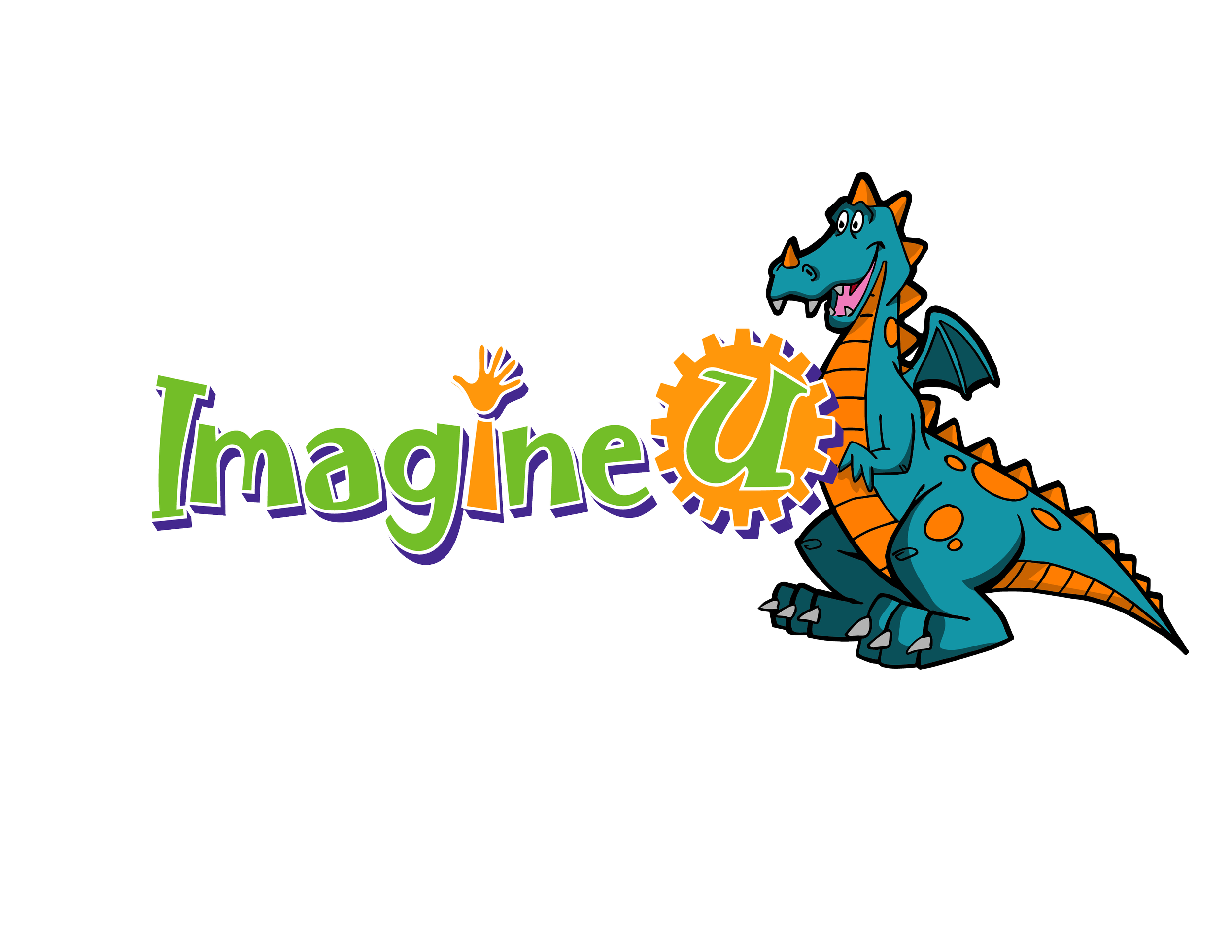The Imaginarium
DESCRIPTION
This most distinctive structure in the Imagination Station is this glassed-in room made up of 8 large glass panels. This structure is designed to invite kids and parents to express their artistic imagination by painting directly onto the glass panels with the water-based paints provided. Simple in concept, this exhibit is really one of the key examples of Art supporting Science. The fact that the paint surface is transparent allows the work to be viewed on both sides, thus enabling the parent or docent to show the children the “reversed” nature of their art and effectively challenge the kids to paint (or write) something on the inside that is legible on the outside. This effectively is providing an exercise on the fundamentals of conceptual and abstract thought and turning it into reality. Such conceptualizing and realizing is the basis also of scientific concepts and engineering principals.
The room has a single large entrance. As seen in the picture, the panels are large and tall, allowing up to 16 elementary-aged kids to be inside painting at the same time. Covered gutters run almost the entire circumference inside the structure and there is a water source under a flap in the space. This means that it is possible to hose off the glass and squeegee it dry in about 10 minutes when necessary. There are several custom-made wheeled paint carts that can each hold 12 small tubs of paint, two large containers of brushes, and two cups of water. Each can effectively support 4 to 6 children painting. There is also a cart placed just outside the entrance which has vinyl aprons in 2 sizes to protect the kids’ clothes. The paint used here was specifically selected for their ability to adhere easily to a glass surface, yet be water-soluble and not stain while wet. Still, handi-wipes are available and offered to keep the kids’ hands clean.
Caters from 2 – 14.
Craft Room
DESCRIPTION
The Craft Room is a lively art area where visitors create something to take home with them. This area will benefit from the instruction and supervision of staff, volunteers and visiting artists. This area features making art from recycled materials. Recycled art materials (cardboard tubes; lids; caps; reels; packets; papers, etc.) and equipment for these special projects
are available. In addition to instruction by museum staff, local artists may also offer workshops and teach their crafts to visitors. (the website http://www.recyclethis.co.uk will provide a lifetime of ideas!).
The museum two types of craft – unstructured craft, or free-form, where kids and parents are left to their own devices to create a craft out of the available materials, and structured craft where full instructions and plans are prepared with specific materials to create the displayed craft. The two craft are geared to slightly different age groups and are rotated every two days throughout the month.
In addition to these, the area also provides a chalk drawing wall, easels for crayon and marker art, plus an additional art activity table that hosts special activity art.
Caters from 2 – 10.
Sample Activity for Educators
The Imaginarium Activity: Utopian Cities
City planners work to make cities more convenient, efficient, and pleasant for citizens. They collect and analyze data to learn about the people, important industries, infrastructure (the most basic level of organizational structure in a complex body or system that serves as a foundation for the rest), and environment of a city. They use computers and create models to lay out their visions for the city while keeping in mind the wants of the community.
What to do:
- Decide what you want to have in your city. Think about what a city must have to function and meet the needs of the citizens.
- Paint the city you’ve created in your mind. Use as much detail after answering the questions above.
What to ask before/during the activity:
1. Who protects the people, cares for animals and the sick, and governs the city?
2. Where do people go to have fun, work and live?
3. What is the name of the city? What do people learn in the city?
4. How do people keep their money safe, get from one place to another, eat, care for the environment? How is electricity and water provided to the residents?
What to ask after the activity:
1. Were you able to convey your vision onto the walls of the Imaginarium the way you wanted?
2. Did you address all of the “Who” “Where” “What” and “How” questions in your painting?
3. Did you add anything that makes your city unique or one of a kind? If so, what?



